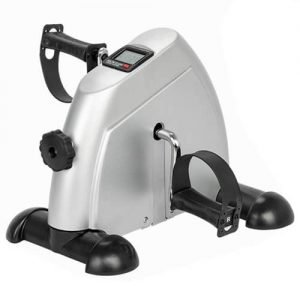How To Effectively Help Your Loved Ones Prevent Pulmonary Embolism

Pulmonary embolism in the elderly
When a blood clot forms in the leg, breaks loose and travels to the lungs, this is known as a pulmonary embolism. The mortality rates connected with the disease also rise in tandem with the patient’s age as the condition progresses. This is a severe illness that, if left untreated, can result in irreversible lung damage. In addition, it is the third most significant cause of death after myocardial infarction, and cerebrovascular illness is the most common cause.
Pulmonary embolism – a condition that comes with old age
According to the findings of several different research studies, the condition is still underdiagnosed and, as a result, undertreated among older people. In addition, authorities assert that as one age, one’s risk of developing it significantly increases. As a result, it is essential to implement strategies that would facilitate the early detection of the condition, hence reducing the number of deaths that result from it. In light of this, investigations into the lower extremities and consistent scanning of the lungs should be of the utmost importance. To assist in diagnosing the ailment in your loved ones at an earlier stage.
Realizing its Importance
It is a disorder in which a blood clot becomes lodged in an artery of the lungs, preventing oxygen from reaching those parts of the body. It is a lethal disorder, and if fast action is not performed, it can cause death within an hour of its symptoms.
The series of occurrences that take place after the blood clot has been implanted. The size of the blood clot that caused the thromboembolic event and the location at which it became attached are significant factors. For instance, if there is a minor thromboembolism. In most instances, it does not cause any symptoms since it attaches itself to the distant parts of the lungs and remains there. It only results in a cough or discomfort in the chest.
On the other hand, if there is a large clot, it will become lodged in the pulmonary artery of the lungs. This can be fatal. In addition, it can potentially disrupt hemodynamics, which may ultimately result in mortality.
Risk factors
Deep vein thrombosis frequently leads to pulmonary embolism as a subsequent reaction or complication of the condition. Because of this process, the blood clot in the leg becomes dislodged and travels to the artery in the lung instead. This causes a pulmonary embolism to occur as a result. However, deep vein thrombosis isn’t the only condition that can put your loved ones in danger of the disease. There are a lot of additional risk factors. This is a complete list of risk factors for pulmonary embolism, and it includes the following:
-
A history of deep vein thrombosis or pulmonary embolism in the family
-
Getting older
-
A sedentary or inactive lifestyle
-
Obesity
-
Cancer
-
Several medications
-
Previous stroke or heart attack
-
Hip, leg, or pelvic fractures
-
Surgery on the knee, pelvis, hip, or abdomen within the last three months
-
Varicose veins
The signs and symptoms of a pulmonary embolism
The diagnosis of pulmonary embolism can be difficult, particularly in cases involving loved ones who are already afflicted with heart illness or lung condition. In addition, it is necessary to have a thorough understanding of the signs and symptoms of a pulmonary embolism. If the signs are recognized promptly, this will allow for rapid action, which will help save many lives.
The severity of the signs and symptoms of pulmonary embolism is typically proportional to the size of the clot. And how severe the harm is to the lungs that have been impacted. In addition to that, heart disease could also be the cause of the symptoms. The following is an exhaustive list of signs that a pulmonary embolism can cause:
-
Shortness of breath:
A pulmonary embolism almost invariably presents with the characteristic sign of shortness of breath. When there is a clot in the lung, the first symptom typically presents as shortness of breath or trouble breathing. Exertion or physical activity tends to make signs of shortness of breath worse.
-
Cough:
This typically results in copious coughing, and the mucus produced may contain blood.
-
Chest pain:
The discomfort in the chest was considerable and did not go away when the patient rested. The pain will worsen if you do any physical exercise or cough while it’s happening.
In addition to the typical symptoms described above
-
Mild or moderate fever
-
A bluish cast to the skin is caused by a reduction in oxygen reaching the lungs.
-
Dizziness
-
An excessive amount of sweating
-
Aches and pains in the lower legs, particularly in the calf muscles
-
The abnormal rhythm of the heart
-
Anxiety and an inability to relax
Preventing pulmonary embolism
Even though anticoagulant medicines are reasonably effective at doing their function, despite this, there is still a significant possibility that it may happen again. As a result, adjusting one’s way of life is recommended. That might be useful in averting further assaults on an individual. The following are some particular methods that can assist in the prevention of pulmonary embolism:
-
Age and exercise
The two major risk factors for pulmonary embolism are getting older and being sedentary for long periods. Our elderly loved ones often become unable to move around owing to the effects of aging or medical issues. Or for the determination to choose a sedentary way of life. These factors contribute to an increased likelihood of a pulmonary embolism. As a result, those specializing in medicine consistently advise that everyone get regular exercise and not sit for more than half an hour. If going for walks is challenging for the people you care about, you may always encourage them to move their legs while seated.
Additionally, this can dramatically lessen the likelihood of developing blood clots in the legs.
Consequently, this reduces the risk of developing a pulmonary embolism. It would be best to get your older patients to move their feet up and down while pointing their toes toward their knees and then down. Because this is such a beneficial workout, we should strongly recommend that our senior citizens do it daily.
-
Smoking
This is yet another essential aspect that can bring about a boost in the likelihood of getting one. If your older loved one has a smoking habit, you have a responsibility to assist them in kicking the habit.
Caregiving can be challenging, frustrating, and highly stressful!
But it doesn’t have to be that way.
I will tailor the sessions to your specific needs to:
Additional Education
Education in caregiving refers to acquiring the knowledge, skills, and understanding necessary to provide care for individuals who require assistance with activities of daily living, such as bathing, dressing, eating, and grooming.
This education can be obtained through formal programs or on-the-job training and experience.
Education in caregiving aims to equip individuals with the skills and knowledge necessary to provide high-quality, compassionate care for those in need.
Caregiving can be challenging, frustrating, and highly stressful!
But . . . it doesn’t have to be that way.
Imagine . . .
- Giving care with expertise and confidence
- Managing your loved one’s daily activities in an organized and structured way
- You follow a proven caregiving system that provides for your loved one’s needs while giving you peace of mind.
If the above sounds like what you need and have been searching for desperately . . . Then you need to enroll in The Ultimate Secrets to Caregiving with LESS Stress and MORE peace course!
Conclusion:
It may be helpful to follow the guidelines above and suggestions. Caring for a loved one may be challenging when you are concerned that they may have a pulmonary embolism, but it is not impossible. You can accomplish this if you have the necessary knowledge. Taking care of yourself and maintaining your business should remain top priorities while caring for someone else. I am here to help you through this process; please get in touch with me to set up a planning session to discuss how to maintain order in your personal life and your professional endeavors. In addition to that, you should read this article about breathing.




One thought on “How To Effectively Help Your Loved Ones Prevent Pulmonary Embolism”